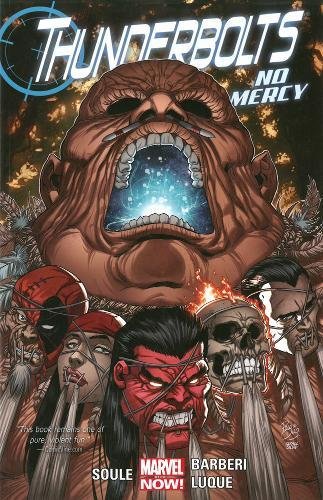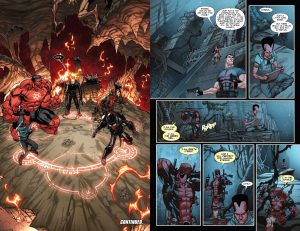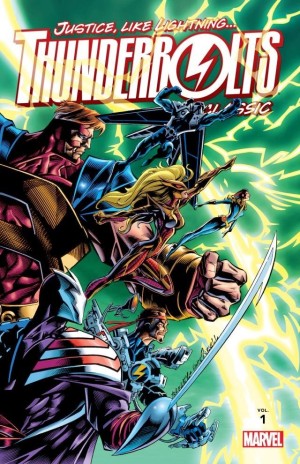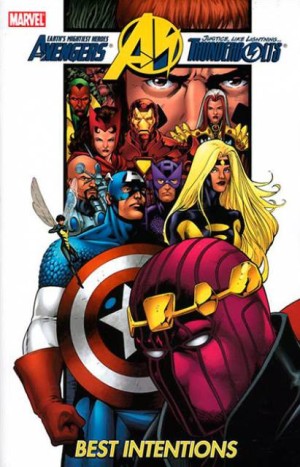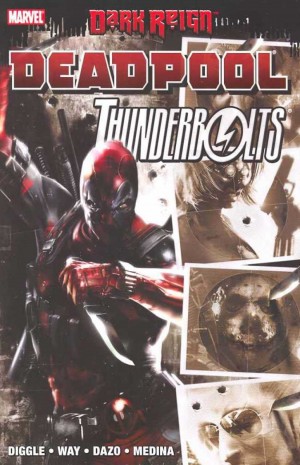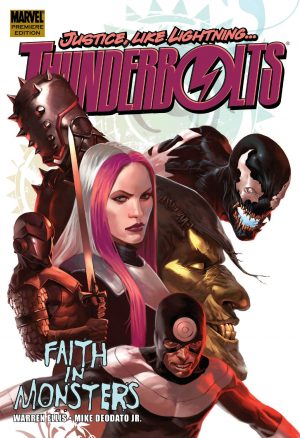Review by Frank Plowright
In rectifying what he feels to be the errors of his military life, General Thunderbolt Ross, aka Red Hulk, freed an alien entity named Mercy who’d once fought the Hulk. She’s immensely powerful, but an unknown quantity, drawn to death and able to suck the life force from anyone who at the point of contact wants to die. After the events of Infinity, however, even Ross realises Mercy can’t continue on the loose and the Leader comes up with an ingenious plan where she can be put to good use.
Charles Soule is on better form here than he was on Infinity, so perhaps that was just a case of finding his feet. The Leader’s plan requires the involvement of Ghost Rider, Soule follows up on the events of X-Factor: Hell on Earth War, and tones down his previous comedy to a drier style that works. With Ghost Rider now part of the team we say goodbye to Venom in suitably aggressive fashion, and No Mercy closes with a three part story that returns this Thunderbolts story to its roots, carrying out a mission to provide Ross with some closure. The setting is good, a river heading through the jungles of Honduras, and it throws the Thunderbolts up against something they can’t deal with immediately or easily. It’s appealingly Indiana Jones in places. Throughout both stories there’s a good role for the Leader, or Samuel Sterns as he is in this series. Soule’s seized on Sterns as his signature character, restoring him to something at least approaching his former level of intelligence, and having him constantly scheming in the background. There’s an element of control that avoids him escaping with ease, but he makes for a great wild card.
Artistically, the pages provide contrast, but thankfully no-one whose style is as unsuited to mainstream superheroes as the previous Jefte Palo. Carlo Barberi (sample art left) provides the best work, drawing slightly on manga influences, but still able to present the cast as the monsters they are, if a little delicate when it comes to Elektra. Paco Diaz has a brilliant sense of location, his temple design evocative and his jungle almost sweltering off the page, but isn’t as convincing when it comes to plain human anatomy. Deadpool being strange might be permissible given his unique status, but the rest of the cast are also distorted. That’s the default mode for Kim Jacinto’s single chapter, but it serves the story well, as that requires everyone to be exaggerated.
Unfortunately, having produced some readable stories here, Soule can’t come up with a way to finish his Honduras piece, and resorts to a cliché instead of employing his writer’s imagination. It’s idle and disappointing, and it’s his farewell to Thunderbolts. Punisher Vs. the Thunderbolts is next.
